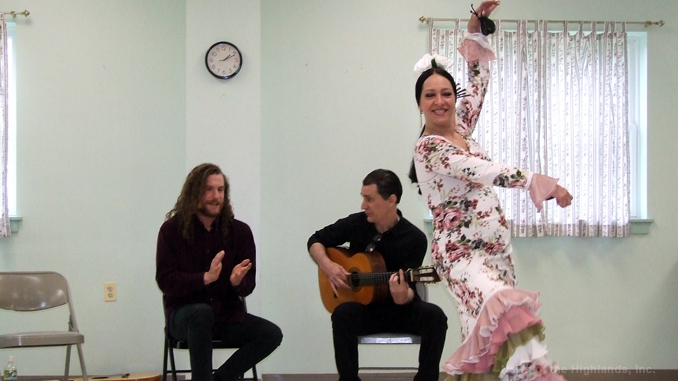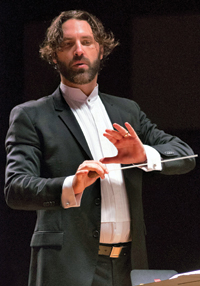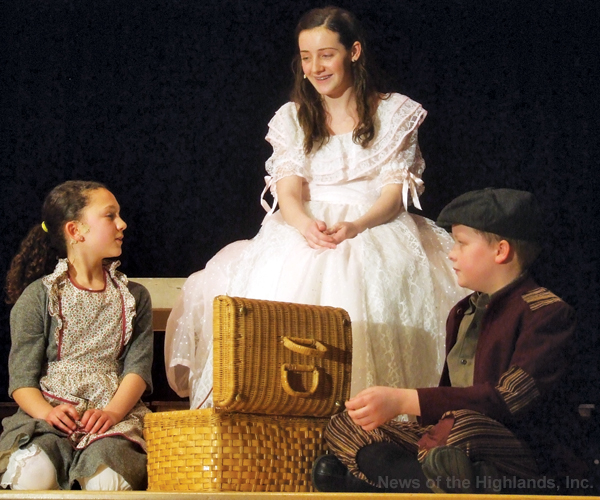
When Greg Melnick heard a Flamenco guitar player at a New York City restaurant, he was so captivated he decided to quit his job and spend a month and a half in Spain to learn the technique. On May 5, Melnick showed off what he learned during a concert at Munger Cottage.
Melnick currently lives in New York City, but he spent most of his life growing up in Cornwall, moving here at the age of 5 and graduating in 1990 from Cornwall High School.
He started playing guitar at the age of five when his parents heard him play a song on a piano, even though he had never received any lessons. His parents bought him a more sizeable instrument and he began receiving weekly guitar lessons at home. It didn’t take long for Melnick to play fluently.
Unfortunately, Melnick’s family moved from New City to Colorado, eventually settling in Cornwall a year later. In the process, he stopped playing guitar and didn’t pick up the instrument again until he was in high school. He had been listening to heavy metal music and felt the urge to start playing again. A friend of his began giving him lessons and Melnick learned how to play rock, blues, and heavy metal music.
Through his 20s, Melnick played in some bands, but it never developed into much more than a bunch of friends getting together to play for fun.
It wasn’t until his early 30s Melnick first heard Flamenco music. He was working at IBM at the time.
“It was amazing,” he said. “The speed, fingerpicking, the sound was like two guitars playing at the same time. That was it. I said to myself, ‘that’s what I’m going to do.’”
Melnick bought a “how to play Flamenco guitar” book and started learning a bit. He then found someone to take lessons from in New York City. Soon after making the announcement he’d be quitting his job, he made the move to Spain.
“I really didn’t think working in an office was helping me.”
Melnick was more excited than nervous about making the life-altering change. Getting settled took some time. He left with a list of cities he wanted to visit and learn in, but didn’t have many contacts.
“I would spend the days walking with my guitar out and eventually I’d meet someone who played and learn from them, sometimes teaching blues and rock in exchange.”
As his playing started to improve, Melnick was excited to come back home and entertain audiences with Flamenco.
“Performances were difficult at first because I didn’t count on the amount of anxiety I’d get playing in front of people. Sometimes it felt like my head was going to pop and I constantly worried about making mistakes. On top of that, I’d injure my arm from practicing too much. The shows that I could get were usually an hour drive away.”
Realizing he couldn’t make a living playing music, Melnick became an independent contractor taking jobs as a painter, brick paver, handyman, laborer, etc.
Then one night he got a phone call from a restaurant in Poughkeepsie requesting he play guitar on the weekends. Melnick accepted, despite the arm pain, lack of practice, and constant anxiety. He decided to loosen up and not take playing as seriously. That’s when things started to get better and he began to enjoy performing.
“I looked for more opportunities to perform and played where ever I could. Winery events, coffee shops, retirement communities, and open mic nights when things were slow.
A few years later, Melnick decided to learn how to accompany Flamenco dance.
It’s very challenging. Most Flamenco palos have a 12-beat rhythm with accents thoughout. The guitarist has to know these rhythms so well that they’re not thrown off by the dance. I figured I knew enough where I could easily pick it up and accompany dance.”
Melnick soon learned it was a lot harder than he originally thought. He eventually moved to New York City so he could receive more guitar lessons and attend these dance classes. The teachers were supportive as Melnick continued to hone his craft, but there was still more to learn.
“Not only does an accompanying guitarist have to know how to anticipate what the dancer will do, there’s the singing too. The singer is the most important part of Flamenco. Each singer has their own interpretation of how songs are sung and the guitarist and dancer have to follow it. Sometimes I’d think they’d sing one thing but they’d sing something else. That led to me going to more classes which were specifically for singing.”
During this time, Melnick was hired by the dance company Flamenco Vivo to accompany classes for kids with disabilities. It was through the dance company that he met Juana Cala, the dancer with whom he performed at the concert at Munger Cottage. At one of the performances where the kids were placed on stage, Melnick met Mario Rincon, the singer to round out this past Sunday’s trio. Since meeting two years ago, the trio has performed together a few times.
Today, Melnick continues to play for classes is performing a few times a month.
He hopes to one day play full time, but for now, there’s so much to learn, the education never stops.



